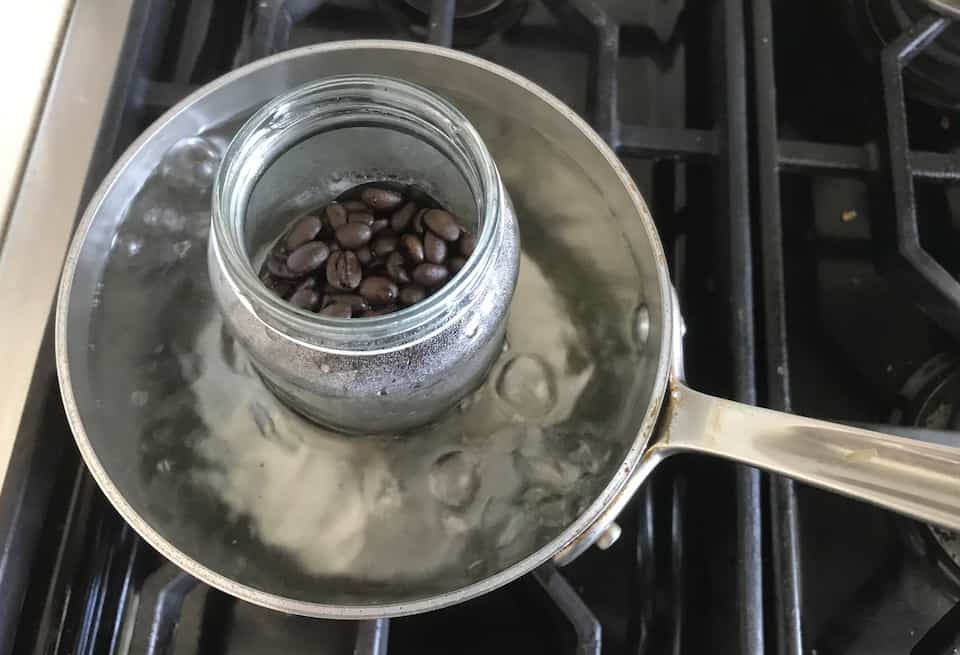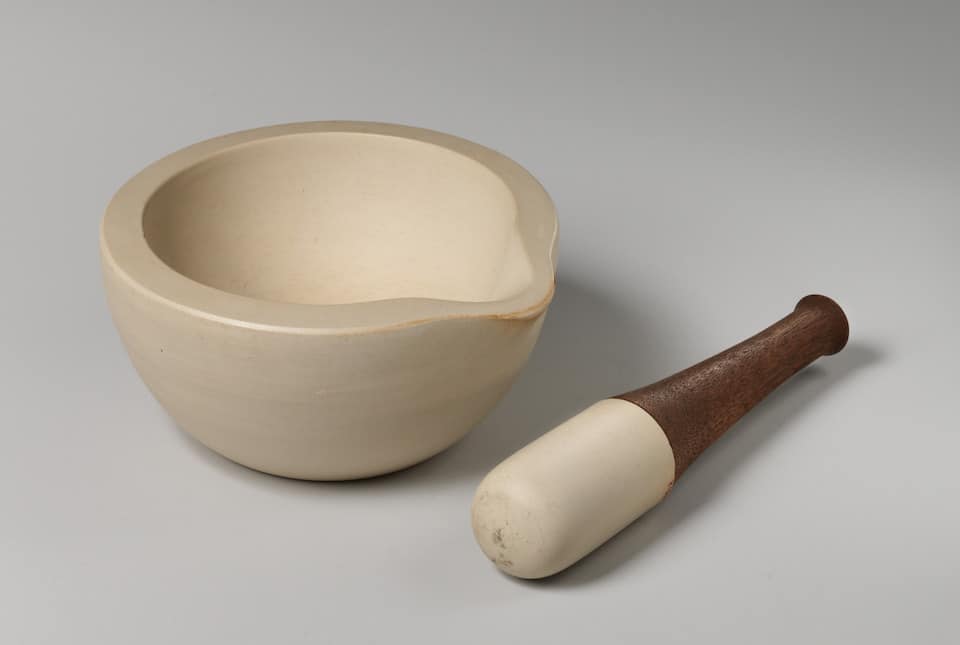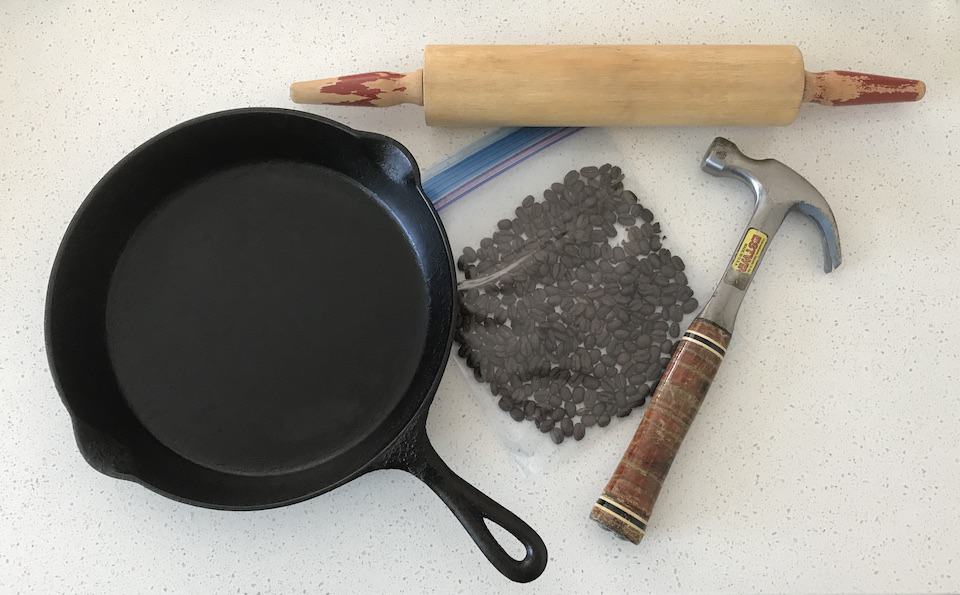Last Updated on December 8, 2023
Knowing how to grind coffee beans without a grinder can be useful trick if you’ve accidentally picked up a bag of whole beans that you thought were pre-ground. Or maybe your grinder’s in the shop for repairs and you’re still desperate for your morning brew.
Coffee beans are notoriously hard to grind, but there is no need to go without coffee. You probably have something in your kitchen that will allow you to grind your beans.
Pick your tool from the list below and we’ll jump you straight to the instructions for how you can use it to grind coffee beans.
Coffee grinder alternatives
What follows are 13 methods you can use to grind beans without a coffee grinder. They probably won’t get you to a very fine grind, so if you picked up your beans for your espresso machine, you might be disappointed. But for most other brewing methods, these tricks will get you there. And some of them might surprise you.
Can you brew coffee beans without grinding them?
Let’s get this question out of the way first. The short answer is yes. You can brew coffee with whole beans, but it will take a long time.
Water extracts the good stuff from coffee beans by interacting with the surface. The reason we grind beans is to create a lot more surface area for that to happen quickly. The smaller the particle size, the more quick the reaction. If we don’t grind, the interaction still takes place but the surface area is quite limited. Hence, the wait.
If you want to try it, see the detailed instructions in our post, How To Make Coffee With Whole Beans.

Grinding coffee beans without a grinder
You’re going to be surprised at the number of innovative ways people have found to grind coffee beans with no grinder!
We don’t know if your suffering from a power outage or just a lack of equipment, so we’ll break these grinding methods down into those that require electricity, and those that can be done by hand.
How to grind coffee beans with household electric devices
Blender
You can grind coffee beans in a blender, and it won’t take a lot of effort. You probably have a blender sitting in one of your kitchen cabinets.
Most blenders have different settings, and if you aren’t sure which one to try then go with the “grind” setting first. Use short bursts, or pulses—leaving the blender on continuously could overheat the motor. If you find the grinds settling towards the bottom and making it difficult for the whole beans to reach the blades, turn the blender off and use a spoon to remove the grounds. You can always return them to the machine later if you need a finer grind.
By using a blender, you can quickly turn beans into grounds in no time. A NutriBullet, Magic Bullet, or even an immersion blender (using your hand as a cover to block any bean fragments from jumping out) can work equally well for grinding coffee beans.
Keep in mind that if you have oily beans, you’ll want to give your device a thorough cleaning before using it for salad dressing or something.
Food processor
You can grind coffee beans in a food processor. A food processor is a versatile kitchen appliance that allows you to grind, pulse or mix a variety of foods.
Using a food processor to grind coffee beans is similar to using a blender. It’s important that you use short bursts to grind your beans. This will help you get just the right grind size. When the beans are mostly ground, make sure you check them after every pulse. By doing so, you will avoid over-processing them. Grounds that are too fine undergo extraction very quickly, and over-extracted coffee tastes bitter.
Immersion blender
In theory, using an immersion blender to grind coffee beans is no different than using an actual blender. The blades look very similar—the only difference is they aren’t built in to the bottom of the blending/rinding receptacle. Instead, you hold them upside down and insert them into the receptacle.
In practice, with coffee beans, this method is a little messy but doable. You cannot close the top of the receptacle when grinding with an immersion blender, so you should choose a tall and narrow receptacle to make it less likely that flying coffee particles will blow all over your counter.
You’ll also want to shield the upper opening with your hand as much as possible while you grind.
Spice grinder
Spice grinders are great for grinding coffee. In fact, they are the kitchen device that is probably closest to a coffee grinder in design. Think about the spices that need grinding—nutmeg, coriander seeds, juniper berries—and you realize they aren’t too different from coffee beans.
The caveat with a spice grinder is the same as it is for a garlic press. That is, spice grinders tend to take on aromas, so you’ll want to get it as clean as possible before using it to grind your coffee beans. Give it a good cleaning afterward, too, so your next curry doesn’t taste like coffee.
Magic Bullet
You can use the Magic Bullet and its big cousin, the NutriBullet, for grinding coffee because they are not too different from blenders. Results should be similar.
In fact, these devices really excel at short pulses. With the Magic Bullet, you have to press down on the device to get a pulse, but it gives you really good manual control.
You can easily lift the receptacle off the device to check how fine your grinds are, and resume grinding quickly and easily if necessary.
How to grind coffee beans by hand
Mortar and pestle
The mortar and pestle dates back to ancient times. It’s often used to make rubs and marinades. You can also grind coffee beans with a mortar and pestle.

This method is a bit labor-intensive, but the results tend to be worth it. A mortar and pestle gives you much more control than an electric device over how much you grind your beans, but it takes time and you need to plan accordingly. Here’s what you’re in for:
It’s best to use a mortar and pestle when you don’t have that many beans to grind, or if you need a coarser grind to make mason jar cold brew or French press, for example. If you just want to make one cup of coffee, you should be able to grind enough beans to an adequate particle size in under five minutes.
One of the nicest things about using a mortar and pestle to grind your coffee beans, is that there really isn’t much mess to clean up once you are finished.
Rolling pin
A rolling pin works just as well for grinding coffee beans as it does for roll ingout pastry or rolling out your iliotibial band after a long bike ride.
Save yourself a mess by putting the coffee beans in a sealable bag like a Ziploc before you begin. Press the air out of the bag, seal it, put the bag on the counter or a cutting board, and lean into the beans with your rolling pin. To grind fine, you will need to use a lot of force. When the beans are ground, just keep going back and forth to get to the grind you want.
You can keep unused grounds in the bag for future use—just remember that ground coffee doesn’t last forever.
It will take some time to grind your coffee beans using this method, but it is pretty effective if you have no other way to get the job done.
Hammer
When it comes down to it, you may be willing to try anything to grind your coffee beans. The simplest tool might actually be in your garage. A hammer can come in pretty handy when you have a bag full of coffee beans and nothing to grind them with. And if you have some pent-up energy to get out, this will be the perfect coffee grinding method for you.
As with the rolling pin method, first put your coffee beans in a sealed bag and lay it flat on a cutting board. Then use your hammer and beat your beans until they are pulverized. It is easy to crush your beans too fine using this method, so check them often. Be careful not to damage your counter with the hammer.
You should use the thicker freezer bags for this method. You might also consider double-bagging—a sharp blow with a hammer could put a hole in your bag, and you might end up with coffee grounds everywhere. Keep checking your bag to make sure it’s not being compromised by the hammer’s blows.
Meat tenderizer
A meat tenderizer grinds coffee in the same way as a hammer does. Of course, we’re talking about a manual meat tenderizer rather than a chemical meat tenderizer. It’s basically a heavy mallet that you use to pound meat to soften it up.
Many meat tenderizers are made from heavy iron, so they actually have more heft than a regular hammer and may be more effective at crushing coffee beans.
Be sure to contain your coffee beans in a heavy duty Ziploc freezer bag before going after them with the meat tenderizer, as it will make it much easier to collect the grounds afterward.
Knife
Grinding coffee beans with a knife takes some time, but you can do it. Use a proper, large chef’s knife for this.
It’s not ideal, because you’re essentially just chopping the beans and it’s very hard to get them all to a uniform size. But the truth is, most blade grinders just chop the beans as well.
The other frustration with using a knife is that particularly hard coffee beans, such as a lighter or medium roast, could eject sideways as they’re chopped. They may end up on your counter rather than your chopping board, and you’ll have to gather them before the next round of chopping.
Darker roasts are softer and are more likely to remain in one place as they’re chopped.
If you get too obsessed about a uniform grind size, you could be there all day. Remember, this is an emergency—you might have to accept a less uniform grind, but you can still get your caffeine fix!
Garlic press
A garlic press can do a decent job of grinding coffee. The drawback is that most garlic presses are only big enough to handle one or two cloves of garlic at a time, so you’re looking at 6-12 coffee beans at a time. You’ll have to grind in small batches.
The other thing to remember is that garlic presses smell garlicky. You’ll want to give it a good wash before grinding your coffee beans, to avoid garlic aromas in your brew.
If your garlic press has interchangeable screens, choose one with larger holes. The coffee is unlikely to pass through a finer screen.
In fact, it might not even pass through a larger screen. When we tested this, only a few particles came out the other side. However, by pressing a couple of times, then stirring the beans a bit before pressing again, we were able to crush them to the point where we could simply remove them the same way we put them in.
You won’t get very fine coffee this way, but you can produce a nice coarse grind for a French press.
Frying pan
Many people don’t realize you can use a frying pan to grind coffee beans. You will use the pan to crush them, but the method will be slightly different than using a hammer or rolling pin.
Place your beans in a sealed bag and put the bag on a hard surface or large wooden cutting board. Grasp the frying pan with your hands on opposite edges of the rim. Gently push down to crush the beans. It will take some force to crush them, but you should be able to crush a lot of them at once.
If you need to make a large pot of coffee, this method is a great option. While you can crush a large volume of beans at one time, the frying-pan method does take some time.
You can use a brick or something similar for this as well.
Hand mincer
If you grind meat, then you probably have a hand mincer. It’s a fairly all-purpose tool, and you can use it to grind coffee beans.
Before you begin, put the grinding attachment on it. You will then need to place your coffee beans inside and use the hand crank to grind the beans. Keep in mind that it will be difficult to grind the beans at first. It will get easier the smaller they get. Don’t be afraid to use some force.
Check your beans often to make sure you get the right size grounds. If they aren’t grinding well, you can try a different attachment. Most people have success using the grinding attachment.
A hand mincer allows you to grind your beans pretty fine, which is especially beneficial if you are trying to make espresso.
Let’s hear about your solutions
In conclusion, there are all sorts of ways to grind coffee beans without a grinder. Don’t go without your cup of joe just because you don’t have a grinder. While the methods mentioned above may take some effort, the effort may make your delicious cup of coffee that much more satisfying.
If you know how to grind coffee beans without a grinder using a method that wasn’t covered here, we’d love to hear from you. Leave a comment or send us an email.
Frequently Asked Questions
Can you brew coffee beans without grinding them?
You can brew coffee with whole unground beans, but it will take a long time. The reason is because water extracts the good stuff from coffee beans by interacting with the surface. The reason we grind beans is to create a lot more surface area for that to happen quickly.
Can you grind coffee beans in a blender?
You can easily grind coffee beans in a blender. If you aren’t sure which setting to use, then go with the “grind” setting first. Use short bursts, or pulses rather than leaving the blender on continuously, so you don’t overheat the motor.
Will coffee beans damage a blender?
Grinding coffee beans in a blender will not damage the blender in the short-term. If you are doing this as an emergency solution, there’s no problem. Your biggest risk is poorly ground coffee, but the blender blades will be fine.
We would caution against using a blender as your regular coffee grinder. Using it regularly to grind coffee will dull the blades more quickly than usual, as a blender is typically used for liquids.
As always, lighter roasts will be harder on your blades than darker roasts, which are softer and more easily broken.
Can you grind coffee beans in a food processor?
You can effectively grind coffee beans in a food processor by using short bursts to grind them. This will help you get the right size. When they are mostly ground, check them after every pulse until you reach the right size.
Will coffee beans damage a food processor?
Coffee beans will not damage a food processor immediately, but they will increase wear over time if you make a habit of grinding coffee beans in your food processor. It’s OK to use in a pinch, but get yourself a proper grinder rather than relying on this method.
Can you grind coffee beans with a mortar and pestle?
You can grind coffee beans with a mortar and pestle, but it will take time and a lot of physical effort. For this reason, it’s best when you don’t have many beans to grind, or you are looking for a coarse grind.
Can you grind coffee beans with a rolling pin?
You can grind coffee beans with a rolling pin by placing the beans first in a Ziploc bag, squeezing out the air, then sealing it and laying it flat on a hard counter. You must use a lot of force to grind the beans fine this way.
Sometimes, it’s just our budgets that keep us from grinding our coffee beans. Check out this list we made if you want to score a great coffee grinder under $100.



How many camping trips have I been on and forgot a grinder? Way too many. Especially when backpacking, you don’t want to take any extra weight. I’m surprised how well grinding the beans between two rocks works.